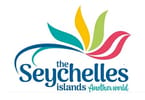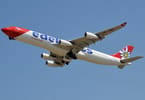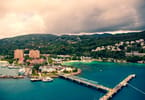The launch of the European Tour Operators Association’s (ETOA) Charter for Successful Tourism in conjunction with European Cities Marketing (ECM) and the International Road Transport Union (IRU) was warmly welcomed by the tourism industry and government alike at a meeting that took place in Brussels today. It brought together several industry groups and Brian Simpson, chairman of the European Parliament’s Committee on Transport and Tourism, for the first time.
The charter sets out a code of best practice for welcoming and managing tourist groups and covers issues such as coach access, capacity planning, changes to regulations and prices, creation of intelligent systems, and collaboration of the various interest groups. It was drawn up to address a number of issues that have been the cause of logistic challenges in cities and to encourage greater collaboration between government and industry on marketing and planning.
Tourism in Europe accounts for over EUR 320 billion in revenue. Seven to eight million jobs depend directly on tourism and 20 million jobs indirectly.
Group tourism accounts for many of the tourists from long-haul destinations, as well as many intra-European tourists. Around 13 percent of European tourism arrivals are from outside the EU, and in theory, this segment of the market represents substantial opportunities for valuable future export growth.
However, Europe’s tourism success is under threat. Its share of global tourism has declined, as measured by international arrivals, from 60 percent of the global total in 1990 to 53 percent in 2008 (source: UNWTO).
In this context, representatives of industry and government (on both local and European levels) were keen to endorse an initiative designed to stimulate closer collaboration to attract tourists and improve the experience of those visiting Europe.
Brian Simpson said that he was very pleased to welcome ETOA’s Charter because it provided a number of practical steps that would help underline the key goals of his committee, in particular promoting Europe as a destination, developing the competitiveness of the European tourism industry, and ensuring the sustainability of the sector.
Tom Jenkins, executive director, ETOA, added: “Groups represent all that is good about tourism. They are sustainable socially, economically, and environmentally, but they are not always well-regarded, and they are not always well-treated. That is caused by misperceptions, and this charter is the start of a dialogue that should dispel misunderstanding.”
Dieter Hardt-Stremayr, president, European Cities Marketing, said: “The charter represents a helpful step forward in the dialogue between the industry and local government. Cities will stay in the lead for group tourism, and we will deal with the group tourism sector as professionally as we do with all other sectors.”
Yves Mannaerts, vice-chairman, IRU, concluded: “Coach tourism is the cleanest travel option in all travel scenarios. Tourists traveling by coach spend 40 percent more at their destinations than other tourists.
“Promoting group tourism by coach is, therefore, a commendable goal from a public interest point of view. However, to realize the full potential of coach tourism, local authorities, coach operators, businesses, and tourist attractions must work in partnership and provide conditions in which coach travel can prosper. Adequate parking facilities, pick-up and drop-off points, together with suitable access to amenities, are essential if authorities want to make their localities even more welcoming to coach parties. Yet, something else is also urgently needed from the outset, and that is the creation of a pro-coach societal and political framework, in which bus and coach services can thrive.”
ETOA’s Charter for Successful Tourism can be viewed at: http://theenvironment.vfolio.co.uk/etoa2010/2/
ABOUT ETOA
Since its foundation in 1989, ETOA has grown exponentially to include over 500 member organizations, of which more than 150 are tour operators. Collectively, ETOA represents over €5bn in spending on accommodation and travel services annually.
ETOA provides representation at the European government level for organizations involved in bringing tourists to Europe.
The association promotes greater awareness of the benefits provided by the group travel industry in Europe – particularly increased income and employment. ETOA also influences European tourism policy and legislation.
Areas of specific activity include:
– Promoting Europe as a tourism destination
– Establishing codes of conduct and guidelines for its members
– Establishing commercial opportunities between buyers and sellers
– Working with other travel & tourism associations to raise the industry’s profile
To find out more, please visit: www.etoa.org
WHAT TO TAKE AWAY FROM THIS ARTICLE:
- Brian Simpson said that he was very pleased to welcome ETOA's Charter because it provided a number of practical steps that would help underline the key goals of his committee, in particular promoting Europe as a destination, developing the competitiveness of the European tourism industry, and ensuring the sustainability of the sector.
- The launch of the European Tour Operators Association's (ETOA) Charter for Successful Tourism in conjunction with European Cities Marketing (ECM) and the International Road Transport Union (IRU) was warmly welcomed by the tourism industry and government alike at a meeting that took place in Brussels today.
- It was drawn up to address a number of issues that have been the cause of logistic challenges in cities and to encourage greater collaboration between government and industry on marketing and planning.






















